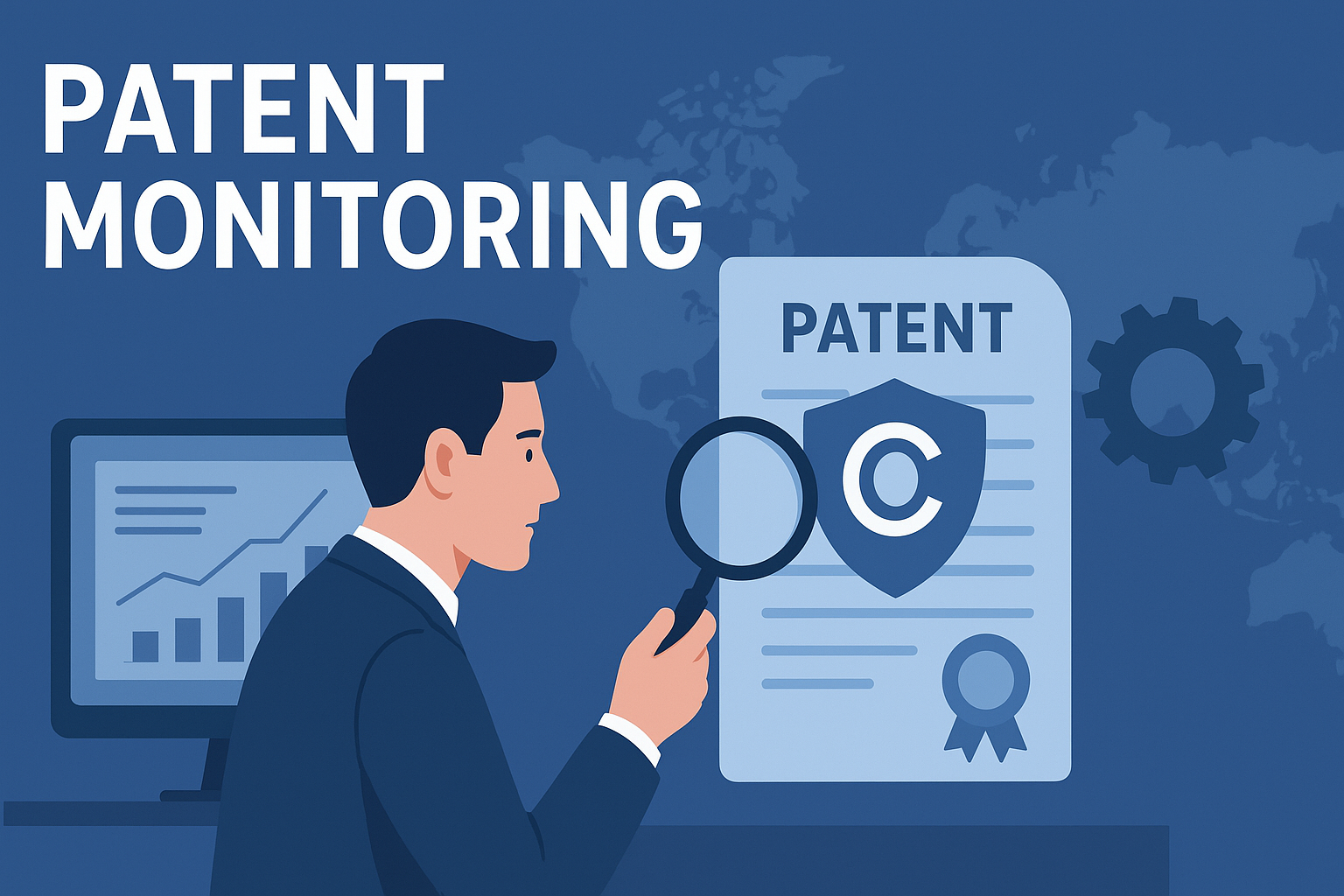In today’s competitive business environment, protecting innovation and staying ahead of competitors requires more than just filing a patent. It requires continuous patent monitoring to track competitors’ activities, technological advancements, and changes in intellectual property landscapes. At Prip LLC, we help businesses maintain a strategic edge with comprehensive patent monitoring services designed to safeguard intellectual property and identify opportunities.
What is Patent Monitoring?
Patent monitoring is the ongoing process of tracking newly published patent applications, granted patents, legal status updates, and technological trends within specific industries. It ensures that companies are always aware of competitor filings, potential infringement risks, and upcoming innovations that could disrupt the market.
At Prip LLC, our specialized tools and expert team provide tailored solutions that allow businesses to make informed decisions about product development, licensing, litigation, and investments.
Why is Patent Monitoring Important?
The importance of patent monitoring lies in its ability to deliver timely intelligence. Here are some critical reasons companies invest in monitoring:
-
Competitive Intelligence – Stay updated on competitors’ latest filings and innovations.
-
Freedom to Operate (FTO) – Ensure your products and processes don’t infringe on active patents.
-
Early Threat Detection – Identify potential litigation risks before they become costly.
-
Strategic R&D Guidance – Redirect research toward unprotected or emerging areas of technology.
-
Mergers & Acquisitions – Assess the value and risks of intellectual property portfolios.
-
Licensing & Collaboration Opportunities – Spot patents that could be licensed or co-developed.
At Prip LLC, our patent monitoring services help clients minimize risks, optimize investments, and maintain technological leadership.
Types of Patent Monitoring
Patent monitoring can be categorized into several key types, depending on business needs:
1. Competitor
Tracks patents filed by specific companies to understand their innovation strategies and R&D direction.
2. Technology Monitoring
Focuses on a particular field, such as artificial intelligence, biotechnology, or telecommunications, to capture all developments.
3. Legal Status Monitoring
Observes changes in the legal status of patents, such as expiration, abandonment, opposition, or litigation.
4. Inventor or Applicant Monitoring
Keeps track of patents filed by individual inventors or research institutions.
5. Market Entry Monitoring
Helps businesses track patents in specific geographies to identify market expansion opportunities or risks.
How Patent Monitoring Works
At Prip LLC, we follow a structured process to ensure accurate and comprehensive:
1. Defining Objectives
Determine the scope: whether it’s competitor monitoring, technology-specific, or legal status updates.
2. Identifying Sources
We leverage global patent databases such as USPTO, EPO, WIPO, JPO, and CNIPA, along with industry journals and publications.
3. Setting Alerts
Automated alerts are configured to provide real-time updates on newly filed or published patents.
4. Analyzing Data
Our experts evaluate the relevance of monitored patents and provide clear, actionable insights.
5. Delivering Reports
Clients receive structured, easy-to-understand reports with recommendations for business strategy.
Benefits of Patent Monitoring with Prip LLC
Choosing Prip LLC for patent monitoring ensures businesses gain:
-
Proactive Risk Management – Avoid infringement issues before they escalate.
-
Better Strategic Planning – Align R&D with market opportunities.
-
Improved Negotiation Power – Use patent intelligence in licensing and partnerships.
-
Global Perspective – Monitor patents across multiple jurisdictions.
-
Tailored Reports – Customized insights specific to your industry and objectives.
Industries That Rely on Patent Monitoring
This is critical across a wide range of industries:
-
Pharmaceuticals & Biotechnology – Track drug patents, generics, and biosimilars.
-
Electronics & Semiconductors – Keep pace with fast-moving technologies.
-
Telecommunications – Monitor standard-essential patents (SEPs).
-
Automotive & Aerospace – Track innovations in autonomous driving, EVs, and propulsion systems.
-
Medical Devices – Ensure compliance and avoid infringement risks.
-
Software & IT – Stay ahead in fast-evolving digital markets.
Challenges in Patent Monitoring
While highly beneficial,it also faces certain challenges:
-
Massive Data Volume – Millions of patents filed globally each year.
-
Language Barriers – Prior art often published in multiple languages.
-
Constant Updates – Frequent legal status changes require active tracking.
-
Complex Legal Frameworks – Variations across jurisdictions complicate analysis.
At Prip LLC, we address these challenges with advanced AI-driven tools, multilingual experts, and a deep understanding of global IP law.
Pros & Cons of Patent Monitoring
| Pros | Cons |
|---|---|
| Provides early competitive intelligence | Requires continuous monitoring efforts |
| Reduces litigation and infringement risks | Can be resource-intensive |
| Supports informed R&D decisions | May generate large volumes of data |
| Identifies licensing and collaboration opportunities | Needs expert analysis for actionable insights |
| Enhances long-term IP strategy | Costs vary depending on coverage and depth |
Frequently Asked Questions (FAQ)
1. How often should patent monitoring be done?
We recommend continuous monitoring, but at minimum quarterly updates for effective insights.
2. Can small businesses benefit from patent monitoring?
Absolutely. It helps startups avoid infringement and identify growth opportunities early.
3. Is patent monitoring different from patent search?
Yes. Patent search is a one-time activity, while patent monitoring is continuous.
4. What tools are used for patent monitoring?
Databases like USPTO, EPO, WIPO, and AI-driven monitoring platforms are commonly used.
5. Can patent monitoring detect expired patents for free use?
Yes, legal status monitoring highlights expired patents that can be freely used.


